Imphal, MANIPUR / Kohima , NAGALAND :
India’s contribution to the Allied war effort is nowhere more evident than in Britain’s greatest battle, fought in Imphal and Kohima
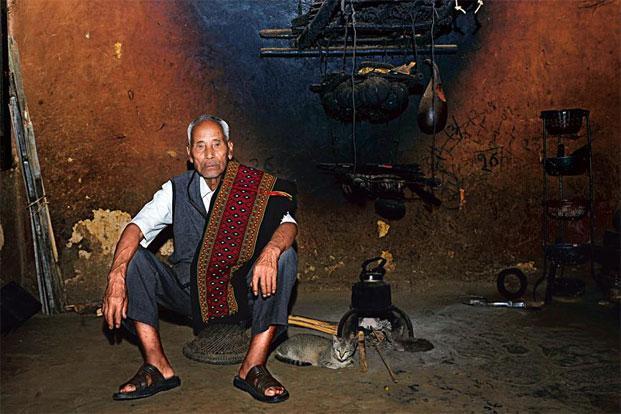
Sitting in a wooden chair on the verandah of his Manipur village home, 91-year-old Nehkhosong Singsit (Nehkhosong Kuki, according to army records) wasn’t expecting visitors when we walked in unannounced through the front gate, past a small lawn, and stood in front of his cheerful, sloping-roofed house.
As his daughter helps her father into a shirt, Singsit’s son, Paogin, a retired bank employee, narrates the fascination his father had for the army uniform; as a 19-year-old, Singsit enrolled in the British-commanded Assam Regiment in 1943.
Other than the need to earn a living, the promise of owning an army uniform was the prime motivation when army recruiters came prospecting to their village at the height of World War II. “Back then, people of our Kuki tribe would wear scanty clothes and my father felt a natural attraction for the army uniform. It stood out for him,” says Paogin.
Singsit would soon be called to action on the battle front when the British-led Allied forces faced a seemingly indomitable enemy in the Imperial Japanese army that was waiting to overrun Allied-held positions in Manipur and beyond.
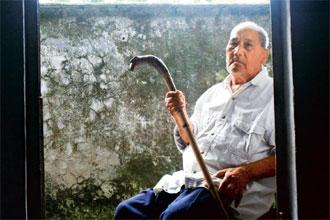
As a sepoy, Singsit’s brief was to provide security to the British colonel who led the regiment of primarily Indian soldiers when the Japanese offensive began on 8 March 1944. The Japanese firing was relentless, and one of the bullets found its mark in his dear friend, sepoy Vaiphei. The Japanese began using his body as a shield, firing from behind him—a ploy that Singsit felt was both tactical as well as psychological.
“I saw my friend’s dead body getting ravaged by bullets. The disrespect shown to the dead was shocking,” says Singsit, his voice firm, though his body is now bent over by age. “The other motive of the Japanese was to demoralize us by exhibiting the dead body of someone belonging to our own land.”
In later months, after the Allied forces scored a hard-fought, decisive victory, Singsit would be charmed by Japanese prisoners of war held at Meiktila in Burma (now Myanmar) doing pencil-sketch portraits of his colleagues and him for an extra roti or bidi. War, he found out, can also be about conflicting emotions.
In the early 1940s in Manipur, a princely state yet to merge with an India then under British rule, the issue of land, and sense of belonging, was often defined ethnically by the locals.
Following his honourable discharge from the army in 1949, Singsit preserved the uniform as a treasured memorabilia of the “fierce” three months between March and July 1944, when the Allied forces clashed with the Japanese. But he had to burn the same uniform voluntarily a couple of decades later.
A violent anti-India secessionist movement led by the Mizo National Front (MNF) was brewing in neighbouring Mizoram in the mid-1960s and Mizo underground military recruiters often visited Manipur villages dominated by Kukis, with whom they shared a close bond. “The Indian Army had a strong presence in our area. I was afraid that if they raided my home and found the uniform they might have misunderstood me for a Mizo militant. I felt extremely sad burning the uniform, but the Indian Army personnel didn’t know, nor would they have cared about my role as an Indian soldier in World War II,” says Singsit.
Epic scale
Forty kilometres from Imphal, Singsit’s rural home is a short drive off what some refer to as “The Road of Bones”. Beyond the insistent beauty of the land of cloud-collected hills, meandering rivers and green fields, is the sobering backdrop of the dead. Around and away from the 138km stretch of road from Imphal in Manipur to Kohima in Nagaland is where around 70,000 soldiers and civilians committed their lives to the cause of world domination over those three tragic months. The battles fought in the tough terrain of Manipur and Nagaland and spread over a 600-mile (around 965km) area have since been recognized as among the biggest—and bloodiest—battles fought by Indian forces.
Seventy years on, when diplomats and participants from Britain, Japan, the US, Australia and India gathered in Imphal on 28 June to commemorate the Battle of Imphal/Kohima—declared in 2013 as Britain’s greatest battle by the country’s National Army Museum, over other notable battles like Waterloo and D Day/Normandy—the memory of the dead, and a prayer for peace, hung like a veil over the proceedings.
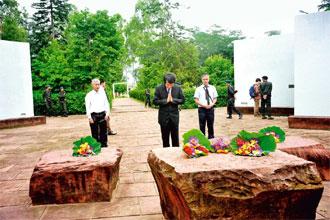
Delegate followed delegate in remembering the thousands who lie interred at multiple cemeteries in the region, including those maintained by the Commonwealth War Graves Commission (CWGC) in Imphal and Kohima. In just two cemeteries in the two cities, over 2,500 Indian soldiers are named; many more lie in cemeteries and memorials spread across the region.
Y. Kawamura at the India Peace Memorial in Red Hill, Manipur
While Scott Furssedonn Wood , the British deputy high commissioner in Kolkata, spoke about the “epic” scale of the battle where 200,000 soldiers and airmen from Japan, Britain, India, the US, Australia, New Zealand, Africa and Canada fought in harsh conditions, others, like Kolkata-based US consul-general Helen LaFave, brought up the issue of missing American soldiers and the continuing search for them. Y. Kawamura, charge de’affairs and minister and deputy chief of mission, embassy of Japan, spoke of eternal peace.
At the extreme end of ferocity, Japanese and Allied troops engaged in almost hand-to-hand combat in the Battle of the Tennis Court, fought around the strategically positioned deputy commissioner’s bungalow in Kohima. The Battle of Kohima saw 4,064 British and Indian casualties, according to the CWGC.
In Manipur, casualty-heavy battles were fought at Nungshigum, where three squadrons of the Royal Indian Air Force supported artillery operations to flush out the Japanese; at Kanglatongbi, where a vastly outnumbered Allied unit held out determinedly against the enemy’s design to capture a supply depot; and at Sangshak, where, from 21-26 March 1944, the first battle of World War II was fought on Indian soil. The six-day battle saw the 2nd and 3rd Guerrilla Regiments of the Indian National Army (INA) fighting alongside the Japanese.
The Japanese army was known for its ruthlessness and innovative ways of thwarting the enemy, like mimicking bird calls and creating tools that relentlessly sent out the rat-tat-tat sound of machine-gun fire. “Often (Japanese) soldiers stood out in the open with their guns with total disregard to their own safety,” writes Arambam Angamba Singh, co-convener of the 70th anniversary of the Battle of Imphal event, in the official souvenir.
While a Reuters report on the Battle of Imphal/Kohima topping 2013’s Britain’s Greatest Battles poll describes the country’s forces in the World War II campaign spread over North-East India and Burma as what many consider “The Forgotten Army”, similar opinions have been voiced in India on the collective amnesia regarding the Indian contribution to the Allied war effort.
This is nowhere more apparent than in the list of surviving Manipuri World War II veterans maintained by the state’s Rajya Sainik Board, under the Union ministry of defence. The list reveals 626 Manipuri (mainly Kuki tribesmen) World War II survivor-soldiers right after the war ended in 1945; 17 are living. The Manipur state government led by chief minister Okram Ibobi Singh actively associated with the high-profile, 28 June commemorative event in Imphal, and officials of the co-organizer, Manipur Tourism Forum, expressed hope of benefiting from “war tourism”. But none of the Manipuri World War II veterans have reportedly received any pension or honorarium from the state government, though other states have done so, according to the secretary of the Sainik Board.
Seated across a small wooden table on the balcony of the Sainik Board office in Imphal, the secretary, retired army officer Sarat Singh, maintains a World War II dossier and deals with the daily travails facing the elderly war veterans and, more often, their widows. Many, it is reported, died in penury. On the day we meet, the secretary had shot off yet another letter to the Manipur government requesting the release of the monthly honorarium suggested by the Union government. “The state government is not law-bound to pay and it’s entirely up to them,” he says.
Since many of the Indian Allied forces personnel were recruited specifically to serve on the battle front during World War II, and were discharged after the war ended and they were no longer required, they were denied a pension. When the British too left India, the war veterans, especially in Manipur, remained beyond the pale of public consciousness and the state exchequer.
Yet there were stellar performances in the war theatre. Squadron leader K.K. Majumdar successfully flew the first bombing mission solo in Burma’s Toungoo, becoming the first Indian officer to receive a coveted award in World War II. In Imphal in May 1944, a message from Air Marshal Sir John Baldwin commended: “For the first time in India’s history, squadrons of fighters and dive bombers manned by Indian pilots have operated in strength against the enemy.” Abdul Hafiz, a Jemadar with the 9th Jat Regiment, posthumously won a Victoria Cross—Britain’s highest gallantry award—for his heroism in the Imphal battle.
Rows of graves of Indian Muslim casualties and lines of inscriptions on pillars with the names of Indian soldiers who were cremated mark the gracefully maintained World War II cemeteries at places like Imphal and Keithelmanbi, stark testimony to the price paid. “I’m hoping still that the government will compensate the World War II veterans for their role,” says Singh.
Nobody’s men
At 95, Khupkolam Vaiphei knows he does not have much time left.
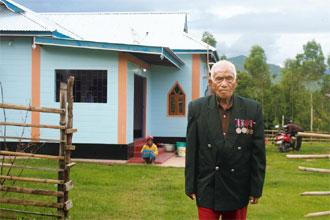
Hard of hearing, the former sepoy of the Assam Regiment who was on the frontlines during a vicious battle against the Japanese forces in Manipur’s Jessami village, bristles with indignation when recounting the indifference displayed by successive political establishments. “During World War II, Indian public and leaders protested against the use of Indian Army personnel in the British war effort and demanded an assurance from the British that India will be given independence if we assisted in the war. Yet we have not received a single rupee since our discharge. We fought for the British, but did we not play a role for India?” he wonders aloud, his deep baritone resonating across the tin-roofed outer room of his house, atop a small hillock in Senapati district’s Phovaibi village.
Back then, Vaiphei’s emotions too were defined by the codes of Kuki community living. His weary, creased countenance seems to age a hint more when he remembers the night—after three whole days in trenches against non-stop Japanese firing—his closest childhood friend and fellow trooper, Lalneilam, was killed in a sniper attack. “From having our food to answering nature’s call, we did everything inside the trenches, such was the Japanese firepower. Lalneilam, though, went out but never returned.”
After over two gruelling months of fighting back, the Japanese started retreating. Vaiphei was among those who followed the enemy, wanting to push them back to Burma, from where they had come. On one occasion, they came across a bunker with Japanese soldiers inside. Two were captured. They had been holding two young Naga Angami girls hostage to serve them. While the British leader of Vaiphei’s battalion wanted to keep the two Japanese alive as prisoners of war, two Naga soldiers defied orders and killed them with their bayonets. “They couldn’t tolerate the insult and dishonour that their Naga sisters went through,” says Vaiphei.
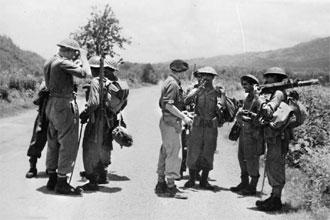
This British victory was particularly significant because it was the first time the Japanese army faced defeat, says Hugo Slim , author and leading scholar at the Oxford Institute for Ethics, Law and Armed Conflict, University of Oxford, UK. He is the grandson of the much-feted Lieutenant General William Slim of the British 14th Army, which led the Allied counter-attack. “The Japanese were a brilliant army and considered invincible,” Slim adds on the sidelines of the Imphal commemoration, co-organized by the 2nd WW Imphal Campaign Foundation, which hosts excavation and trekking tours across Manipur’s known World War II battlegrounds. “This battle stopped the Japanese advance across Asia. The two empires clashed and soon afterwards the empires disappeared. It was a very long and complicated battle against an enemy that wouldn’t surrender and had to be fought till death,” Slim says.
Yet the Japanese campaign against British India, known as the U-go Operation and often viewed as a critical misadventure by the infamous commanding officer, Lieutenant General Renya Mutaguchi , had its share of Indian supporters. The small Manipur town of Moirang is one area where the Netaji Subhas Chandra Bose -led Azad Hind Fauj, or the Indian National Army (INA), backed by the Japanese army, set up a “liberated zone” within British-occupied India, hoisting the INA flag during the thick of the Japanese campaign on 14 April 1944.
As in many other conflict zones in Manipur and Nagaland, a little digging has turned up wartime effects like mortars, rifles, helmets and bullets in Moirang. The INA Museum here is a treasure trove for war enthusiasts. Some glass cases display Japanese and British grenades and bullets side by side, neutralized in the academic air of the museum.
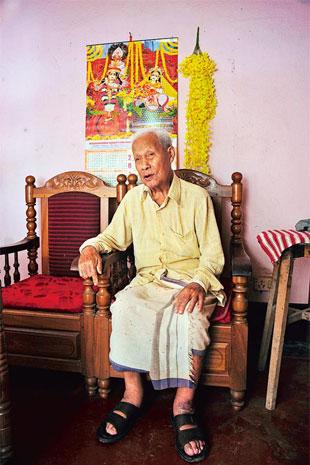
Ninety-six-year-old L. lbomcha, a former deputy speaker of the Manipur assembly, was a supporter of the INA and, by extension, its collaborators, the Japanese army. Age has slurred his speech but it has not impaired his memory. As we gather in the drawing room of Ibomcha’s Moirang home, he says: “For three months Moirang was a peaceful and happy town under INA and Japanese occupation. I mobilized people and collected money and rations for the soldiers. Moirang got a taste of freedom three years before the rest of India,” he narrates.
A little away from Moirang, in the hilly village of Kom Keirap, L. Achung Kom, a villager who looks younger than the mid-90s he says his age is, waited expectantly for Japanese representatives at the Imphal event to grace his home. He looks a little dejected when we alight from our car.
As someone who had assisted the Japanese in 1944, he had, earlier in the day, greeted Kawamura in Japanese when the latter visited Red Hill, the site of a bloody face-off about 20km from Imphal. With both sides launching a vigorous air campaign, 1944 was the first time that Kom saw an aircraft flying over paddy fields.
“This year’s commemoration brought the memories back to the Manipuri psyche and the changes it made to Manipuri society. It catapulted Manipur from a 19th century civilization to a 20th century state,” Manipur governor V.K. Duggal says.
Kom aided the Japanese campaign, ferrying goods and procuring rations and local liquor for the military men. Till some years back, his kitchen still had half a mortar, used to grind food—it was taken away by local authorities. While he remembers the Japanese fondly as people who would keep their gaze down when local women passed by, he is not as enthusiastic recollecting a role he had to play. Digging graves, says Kom, was hard work. “Besides, I didn’t like the presence of the dead,” he adds.
In the battle-scarred plains and hill tracts of Manipur, the dead are buried deep but the mine of memories is just a scratch away.
source: http://www.livemint.com / Live Mint / Home> Leisure / by Shamik Bag / July 05th, 2014








